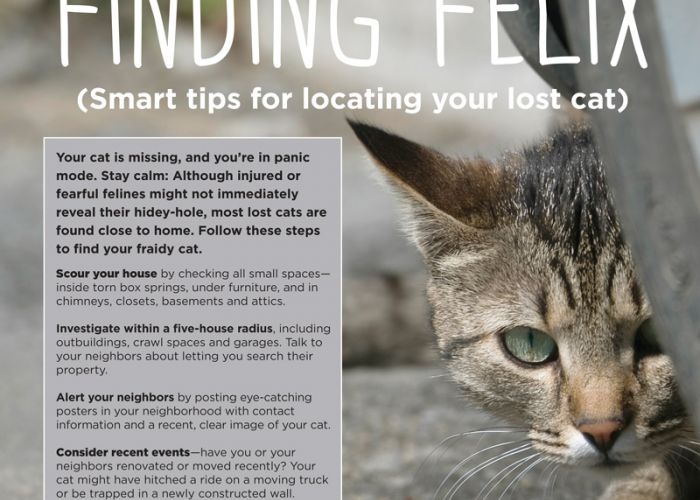Humans of Animal Advocacy: Robert Sotelo
As program manager of Pets for Life/Los Angeles, Sotelo supports pets and people in the community he calls home
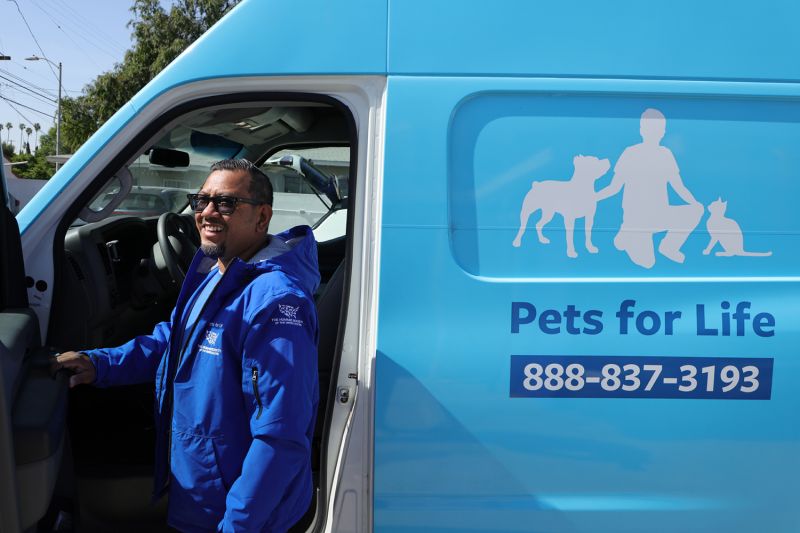
Robert Sotelo never intended to apply for a job with Pets for Life. In early 2012, the Los Angeles-based dog trainer and his wife, Julie, had recently welcomed their first child. Sotelo was working with local group Bark Avenue Foundation (now betterTogether Forever) and was close with founder Melanie Pozez, who learned about the recently launched Pets for Life program and its need for a dog trainer and community organizer.
“She took it upon herself to fill out my application,” saying he needed more stability now that he was a dad, Sotelo recalls.
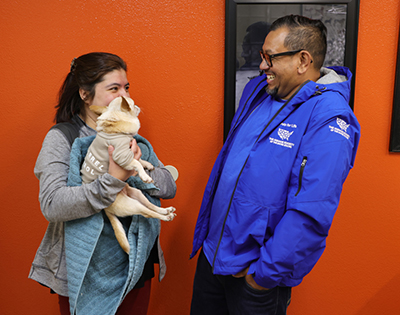
A three-hour conversation with Amanda Arrington, then the Pets for Life director, led to a field interview. “I went out and did some door-to-door outreach, and it was pouring rain and we were soaked,” says Sotelo.
But it didn’t matter. “That’s where I’m from,” he adds. “It was easy for me to talk to everybody.” He got the job.
Over the years, Sotelo has led free dog training classes, coordinated veterinary care appointments, learned the ropes of community organizing and taken on increasing responsibilities. Today, as manager of Pets for Life/Los Angeles, he leads a team of three staff members and a handful of dedicated volunteers who bring pet care resources to six LA zip codes.
In this edited interview, Sotelo describes how a dog named Zebby inspired his career choice and talks about his goals for Pets for Life.
How did you get your start in animal welfare?
As a kid, I had pictures and posters of dogs all over my walls, I had books on dogs, I loved dogs! I got my first dog as an adult in my 30s when I was engaged to Julie. Zebby was a little rottie mix and the best thing that came into our lives. We considered her our first kid. And we realized we had to train her.
I attended a few local classes, and then I realized, I already do all of this! I just needed to understand the language, the techniques and how to apply them. I got my certification from Animal Behavior College, going through all the courses with Zebby, and then from there I started working with rescues, volunteering and helping my neighbors with their dogs. I became a dog trainer for the spcaLA’s Teaching Love and Compassion program, which works with at-risk youth. The kids learn all about compassion, sympathy and empathy through dog training. Shelter dogs were used during the courses, and usually the dogs would be adopted, in part because the kids had trained them. It’s still a great program today.
What does your current role with Pets for Life entail?
I make sure that everybody’s getting the work done! Even though I’m a manager, I still like to be out in the community, so I do door-to-door outreach on my own or with the team. I do home visits, I drop off dog food, I drop off supplies, I visit families and check in, make sure things are going well.
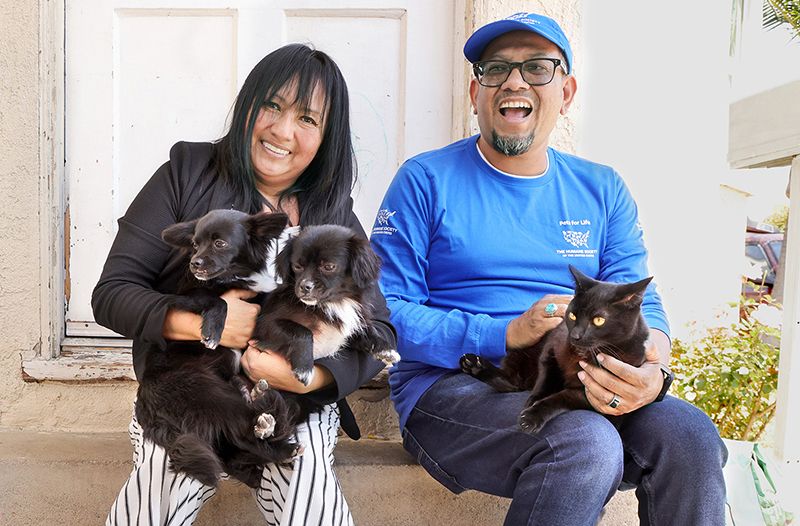
No matter what position you fill in Pets for Life, you’re going to be interacting with families and communities. It’s important to keep those relationships strong because one family can bring 30 other families on board. They spread the word. And that’s pretty much how Pets for Life has developed in the community. It’s all word of mouth.
Do you find time to do any dog training these days?
I do! It’s all free still, and it’s through our program. From time to time there are residents who need assistance with their dog—potty training issues or behavioral issues or barking issues. Things like that. One week of me visiting them an hour a day can make a difference for years to come.
What changes have you noticed since Pets for Life launched in LA?
When I first started there were packs of dogs running around in the neighborhoods we serve. Most dogs know where they live, so the residents would just open their gate, and the dogs would be back in an hour. But because they weren’t fixed, the next thing you know the dog is pregnant or the dog has impregnated I don’t know how many dogs. Over the years the mindset has definitely shifted toward the direction of “Yes, we do need to spay/neuter our pet. Yes, we should walk our dogs on leashes. We should train our dogs.”
I don’t see packs of dogs anymore. Now the focus has really turned to cats and trap-neuter-return and things like that. And we have so many residents in the community who just adore the street cats.
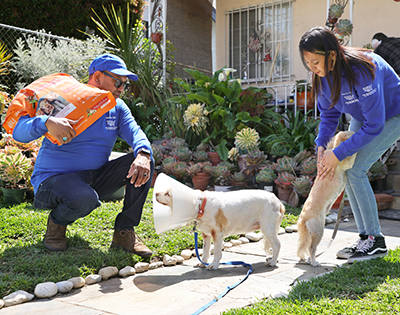
How would you like to see Pets for Life develop in the coming years?
I want to continue to do this work and reach as many people as possible within our community. Even though there’s the internet and smartphones and all that stuff, a lot of people won’t use their tools that way, or they just don’t know where to begin. That’s why it’s important that we continue the door-to-door outreach and meet people directly.
And I hope that Pets for Life can continue to grow. We cover six zip codes right now in LA, which honestly—I wish we could cover all the zip codes! But we’ve got to stay focused.
This type of work can be emotionally draining. What keeps you going?
Seeing the progress we’ve made. Pets for Life has just grown into this force. It’s amazing to watch the program grow and develop. The seed of the program has just grown, planted roots, and now this movement is across the country.



